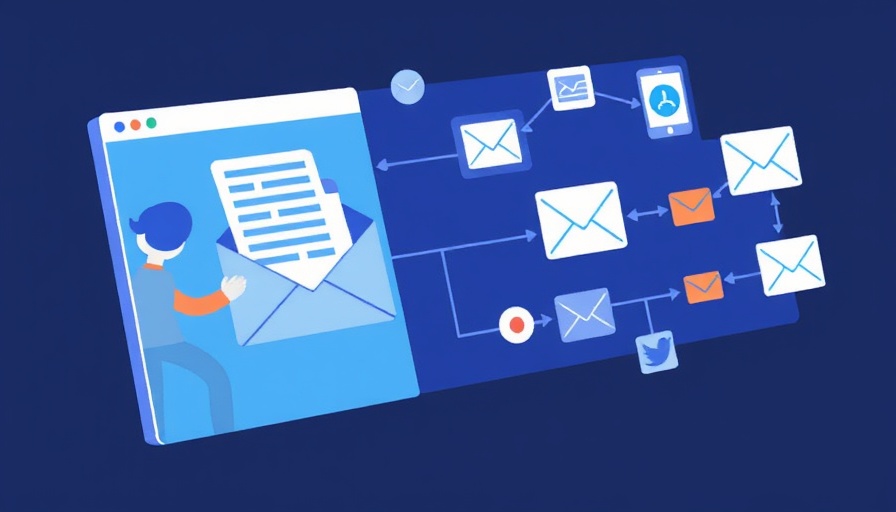
Unlocking the Power of Email Marketing Automation
Email marketing automation isn't just a trend; it’s a necessity for modern marketing professionals eager to enhance customer engagement and drive conversions. Automating your email outreach can save time and precisely target your audience with tailored messages. Imagine being able to automatically send a warm welcoming email to new subscribers, reminders for those who have abandoned their carts, or personalized recommendations based on previous purchases—all without lifting a finger!
Understanding Email Marketing Automation
At its core, email marketing automation involves using software and predefined rules to send personalized messages triggered by specific customer actions. This means that instead of generic blasts, every email you send can be unique and relevant, enhancing your relationship with your customers.
According to a recent report, almost 80% of marketers have seen an increase in engagement through automated email campaigns. With automation, marketing professionals can create segmented lists that allow for targeted messaging, which can lead to higher conversion rates.
Key Benefits of Email Automation
Leveraging email marketing automation can provide several key advantages, including:
- Time Efficiency: Automation means you don’t need to send each email manually, freeing up valuable time for your team.
- Personalization: An automated system can deliver tailored content, increasing the relevance of your communications to each recipient.
- Increased Engagement: Targeted emails are more likely to engage customers and drive action, whether it’s a purchase or further interaction with your brand.
Best Practices for Email Marketing Automation
To maximize the effectiveness of your email automation strategy, keep these best practices in mind:
- Segment Your Audience: Divide your email list into segments based on customer behavior, preferences, and demographics for more personalized communication.
- Utilize A/B Testing: Experiment with different email formats, subject lines, and sending times to identify what resonates best with your audience.
- Monitor and Optimize: Regularly analyze the performance of your automated emails to refine your strategies. Pay attention to open rates, click-throughs, and conversions.
Future Opportunities in Email Marketing Automation
As technology evolves, so does the potential for email marketing automation. With advancements in AI and machine learning, marketers can expect even more sophisticated tools that can predict and react to customer behavior in real time. For instance, future automation systems could provide even more refined personalization and recommend products based not only on past purchases but also on browsing behaviors, enhancing customer experience and increasing loyalty.
As marketing professionals, harnessing the power of email marketing automation can transform how you connect with customers, streamline your workflows, and ultimately drive success in your marketing campaigns. The tools are at your disposal—are you ready to leverage them?
 Add Row
Add Row  Add
Add 




Write A Comment